Results 3,981 to 3,990 of 12096
Thread: Anandtech News
-
06-09-14, 11:30 AM #3981
Anandtech: Corsair Vengeance K70 Keyboard Review
Mechanical keyboards are far from a new technology; they are decades old and some of the first mass produced personal computers came with mechanical keyboards back in the 1980's. After a transition to lower cost keyboards during, however, many users have rediscovered the benefits of high quality mechanical switches, and today they are among the most widely promoted type of keyboard. Today we have Corsair's latest Vengeance K70 in for testing. Note that this is not the version with RGB LED backlighting, but it is the same core design; read on for our full review.
More...
-
06-09-14, 11:30 PM #3982
Anandtech: The Intel SSD DC P3700 Review Part 2: NVMe on Client Workloads
Last week we reviewed Intel's first NVMe drive: the DC P3700. Based on a modified version of the controller in Intel's SSD DC S3700/S3500, the P3700 moves to an 18-channel design, drops internal latencies and sheds SATA for a native PCIe interface. The result is an extremely high performance enterprise SSD that delivers a combination of high bandwidth and very low latencies, across a wide span of queue depths.
Although Intel's SSD DC P3700 is clearly targeted at the enterprise, the drive will be priced quite aggressively at $3/GB. Furthermore, Intel will be using the same controller and firmware architecture in two other, lower cost derivatives (P3500/P3600). In light of Intel's positioning of the P3xxx family, a number of you asked for us to run the drive through our standard client SSD workload. We didn't have the time to do that before Computex, but it was the first thing I did upon my return. If you aren't familiar with the P3700 I'd recommend reading the initial review, but otherwise let's look at how it performs as a client drive.
More...
-
06-10-14, 01:31 PM #3983
Anandtech: AMD Lists New Kaveri Desktop Processors
We are now six months down the line from the AMD Kaveri launch, and the only two Kaveri processors available on Newegg today are the A10-7850K at $170 and the A10-7700K at $160. Both of these SKUs come with games as part of the purchase, but as AMD’s biggest desktop processor launch of the year, one might have expected more processors to come to market by this point. This is especially true as AMD sampled the A8-7600 SKU to media with a configurable TDP which showcased a large jump in graphics APU performance at the 45W TDP margin, but this model number has not hit consumer shelves in North America. Perhaps then we get a sigh of relief that AMD are announcing seven new Kaveri APUs, including that A8-7600.
These specifications come directly from AMD’s website rather than a specific press release, and features a new line of PRO branded APUs. These APUs will have similar specifications but are earmarked for longer life support and warranties for OEMs. These PRO processors also have a ‘B’ at the end of the name, similar to previous ‘B’ processors in the past that were aimed at business environments.AMD Kaveri APUs New Model Modules/
ThreadsBase MHz/
TurboL2
CacheGPU Memory TDP A10-7850K 2 / 4 3.7 / 4.0 4 MB R7, 512 @
720 MHzDDR3-2133 95W New A10 PRO-7850B 2 / 4 3.7 / 4.0 4 MB R7, 512 @
720 MHzDDR3-2133 95W New A10-7800 2 / 4 3.5 / 3.9 4 MB R7, 512 @
720 MHzDDR3-2133 65W / 45W New A10 PRO-7800B 2 / 4 3.5 / 3.9 4 MB R7, 512 @
720 MHzDDR3-2133 65W / 35W A10-7700K 2 / 4 3.4 / 3.8 4 MB R7, 384 @
720 MHzDDR3-2133 65W / 45W 'New' A8-7600 2 / 4 3.1 / 3.8 4 MB R7, 384 @
720 MHzDDR3-2133 65W / 45W New A8 PRO-7600B 2 / 4 3.1 / 3.8 4 MB R7, 384 @
720 MHzDDR3-2133 65W / 35W New A6-7400K 1 / 2 3.5 / 3.9 1 MB R5, 256 @
756 MHzDDR3-1866 65W / 45W New A6 PRO-7400B 1 / 2 3.5 / 3.9 1 MB R5, 256 @
756 MHzDDR3-1866 65W / 35W
There are some interesting trends – the dual module APUs all support DDR3-2133 natively, compared to the single module members that are only DDR3-1866. Similarly the dual module versions have 384-512 GPU cores and are classified as R7 series graphics, whereas the single module APUs have 256 cores and are labelled R5. These latter APUs do have a higher GPU frequency however.
All of the APUs will turbo around the 3.8 GHz to 4.0 GHz range, with varying base frequencies. The consumer APUs will be able to configure TDP from 65W to 45W, whereas the PRO models also have a 35W selection point, which will decrease the maximum turbo frequency.
Exact release date and pricing has not yet been announced. Read our Kaveri launch review with the A10-7850K and A8-7600 here.
Source: CPU-World
More...
-
06-11-14, 03:30 AM #3984
Anandtech: Qualcomm Atheros Launches FSM90xx SoCs for LTE Femtocells
Today, Qualcomm Atheros is announcing a new line of SoCs targeted at residential deployments, along with small and medium business. The FSM90xx line is similar in purpose to the FSM99xx line of SoCs, but is designed for even higher density deployments. In short, this would be the SoC that an OEM or ODM would use to deploy a Home eNode B. This means that current 3G-only solutions such as the Sprint Airave and AT&T Microcell can be replaced with 3G/LTE combo solutions. Qualcomm also stated that this solution would support 802.11n/ac, in MU-MIMO configurations, presumably allowing WiFi router capabilities or operation without wired backhaul. This same SoC also supports up to 3GPP release 10 multi-cell HSDPA. There’s no clear indication of what the maximum UE category is supported in the technical specifications for LTE, but carrier aggregation will be supported. This means that at minimum, the SoC will be able to provide category 4 LTE for devices like the Galaxy S5 and One (M8) that support carrier aggregation.
Ultimately, the greatest promise will be in mass deployment of femtocells using this SoC. Qualcomm has stated that their UltraSON software management solution would allow for dynamic power control on individual femtocells according to other femtocells within range, and also based upon the speed of the backhaul to maximize quality of service. Qualcomm hasn’t given a date for when to expect devices based upon this new SoC, but it can’t be too far out when the demand wireless bandwidth and coverage continues to increase.
More...
-
06-11-14, 07:35 AM #3985
Anandtech: Computex 2014: Transcend Shows SSD370 with Custom Firmware, SSD & RAM Upgr
Transcend has lately been shifting their focus and the company's strategy now is to concentrate on providing upgrade kits to Mac users. That was evident at their Computex booth since nearly half of the booth was dedicated to products designed for Macs and their demos.
First up is the JetDrive, which consists of four models: 420, 500, 520 and 720. All these drives are similar in terms of hardware and performance and the only difference is simply the form factor and connector. The controller is labeled as Transcend but the actual silicon is from Silicon Motion (or SMI as often called within the industry) but Transcend has designed the firmware themselves. The NAND is Micron's 128Gbit 20nm MLC, which allows capacities of up to 960GB.
The 420 is a standard 2.5" drive but it's designed for Macs in the sense that it includes a toolbox for OS X that can enable TRIM along with an aluminum USB 3.0 enclosure for the old hard drive. The 500, 520 and 720 are for MacBook Airs and Retina MacBook Pros that use a unique form factor and connector (supported models can be found here). There is also a USB 3.0 adapter included for the old SSD like the one in the picture above. All models are available at up to 960GB and come with a 5-year warranty
Next up is the JetDrive Lite. It's also designed for Macs and offers an alternative way to increase the internal storage by utilizing the SD card slot. The JetDrive Lite is designed so that it doesn't stick out of the SD card slot like normal SD cards do, so it can comfortably be used as permanent storage. Performance is also fairly good at least for sequential IO but I wouldn't hold my breath for SSD-like IOPS. Once again four different models are available: 130, 330, 350 and 360 with the difference being the Mac model that the card is designed for. The supported models can be found here and all models except the 330 are available in both 64GB and 128GB capacities (the 330 is limited to just 64GB).
Transcend also offers RAM for nearly all Macs made within the last decade or so, including some rarer models such as the eMac.
The SSD370 is based on the same custom Transcend-SMI controller and firmware with Micron’s 128Gbit 20nm NAND but it is aimed for the PC market as the retail package doesn’t include any enclosures or other accessories that the JetDrive 420 does. I’m trying to get a sample of the drive as I’m eagerly looking forward to seeing what Transcend’s firmware team has been able to add to the drive compared to the stock SMI solution.
Some of Transcend’s OEM customers are already employing the SSD370 in server environments. While the drive is mostly designed for the mainstream market, Transcend believes that it’s also suitable as an entry-level enterprise drive.
The SSD370 (or equivalent to it) is also available in M.2 form factor in various lengths. Maximum capacities range from 256GB to 512GB depending on the length and the controller is the same Transcend-SMI solution.
The CFast 2.0 memory cards are designed for high-end video cameras and DSLRs that are capable of recording 4K video. Good quality 4K video, especially uncompressed one, may easily require hundreds of megabytes of throughput per second, so the cards utilize SATA 6Gbps bus to ensure SSD-class performance.
This year a visit to a memory OEM almost guaranteed a sneak peak of DDR4. While Transcend isn’t one of Intel’s official launch partners, they have a full lineup of DDR4 ready, although it’s mainly geared towards the enterprise market.
More...
-
06-11-14, 07:35 AM #3986
Anandtech: Apple’s Swift and What it Means for Developers and Users
On Monday Apple revealed iOS 8 and OS X 10.10 Yosemite. Both of these were expected by everyone who has followed Apple’s pattern of software reveals at WWDC for the past few years. But Apple also revealed new power tools for developers that nobody had expected or even imagined would arrive. One of the most significant of these is Apple’s new Metal API to greatly improve graphic performance by removing the limitations and performance impacts created by using OpenGL. Another, and arguably the most significant of them all, is Swift. Swift is Apple’s new programming language. After four years in development and without a single leak, Apple has created and now revealed what will become the foundation of a new generation of applications for both OS X and iOS.
Safety, modern syntax, and powerful features are three design principles that guided the development of Swift and it really shows. There are huge benefits for developers which translate to benefits for users. Naturally because of that, the first thing to discuss is why Swift is great for programmers before discussing why it will be great for users.
Modern Syntax for Modern Code
Being a brand new language, Swift strives to have a modern syntax that enhances code legibility, and works against bad programming habits. One of the most significant of these syntax changes is the elimination of the use of semicolons at the end of statements. For those who are unfamiliar with programming syntax, a statement essentially states an action to be performed. For example, the statement “X = 5;” would mean to set the variable X to be the number five. In many languages such as C, Java, Flash ActionScript, and of course Apple’s own Objective-C every statement must be ended with a semicolon. In Swift, Apple goes for an approach similar to languages like Python where it is not necessary to end statements with a semicolon. While this may be a difficult change to get used to for programmers used to programming in Objective-C, it will greatly reduce the frustration involved with errors due to the programmer simply forgetting to insert the semicolon at the end of a statement.
Another massive improvement comes in the form of new variable declarations and definitions. Traditionally in programming languages a variable is defined by calling it a variable, setting a name, setting a type, and setting a value. For example, the line “var year: = int “2014”;” indicates that a variable named year is being created and that it is an integer with a value of 2014. In Swift Apple has included a feature they are calling Type Inference. Essentially, it is no longer necessary for a programmer to indicate what type of variable they are declaring. Based on what the variable is being declared as, Swift is able to infer what type of variable it should be. This means that the previously mentioned line can be shortened to simply read “var year: = “2014”.” This applies to any variable types and also extends to data structures such as arrays where an array of names can simply be defined as var names = ["Elaine", "Daniel", "Jash"] and Swift will know that it is an array of strings.
Now of course, the word variable implies that the programming is making a value they intend to change. But what if the programmer is declaring, for example, an integer that should always remain constant? In Swift the programmer is able to define an immutable constant by using the definition “let” rather than “var”. This is a big part of Swift’s new syntax. Immutability is preferred for values that are not going to be changed. From a visual standpoint, defining a constant makes it very clear to anyone reading over code which values are being altered and which are not. From a performance standpoint, declaring values as constants allows the compiler to better optimise code as it knows which values will be changed and which will remain the same. There are also safety benefits to this which will be touched on more later.
There is one final thing to touch on relating to the new code syntax. With Swift, a programmer can assign essentially any Unicode character to be the name of a variable. This allows the use of symbols like the Greek letter theta to represent an angle which further improves readability and effectively communicates what a variable is intended to be. In addition, it also supports emoji and so programmers can assign an emoticon of a banana to represent the word banana should they see fit.
The Programming Power Tools
Swift wouldn’t be a brand new language without some brand new tools and abilities for programmers to take advantage of. Any programmer who uses Apple’s Foundation Framework will be pleased to know that in Swift all typical variables are able to make sure of Foundation methods, and all methods that return a variable return a standard Swift variable rather than an NS variable.
Swift also includes many new ways to modify variables. With Swift strings, a programmer is able to append characters to the end simply by adding them much like accumulating one integer into another. For example, if the programmer takes the string “var name: = “Elain”” and the character “var end: = “e”” they may then write the statement “name += end” and the string will become “Elaine”. This is a stark contrast to Objective-C which would require the use of the NSMutableString type and much more code. This method also works for other data types. Strings may be added together, and arrays can also have values or even sets of values added. If any of the objects are defined using “let” rather than “var” the compiler will give an error about attempting to alter immutable objects.
One of the most powerful features of Swift is something Apple is calling Generics. Generics allow the programmer to create a function that performs a generic task that can work for multiple variable types. For example, a programmer may create a function that adds two variables together, and they may be integers, doubles, strings, etc. The programmer can create a function with a placeholder type name enclosed in angle brackets after the function definition. All variables passed to the function will be created under the placeholder type and the addition operation will be performed on them. This allows the programmer to have a generic piece of code that can perform the same operation on whatever variable types are passed to it, rather than having a function that is limited to accepting a single type of variable.
Safety
One of the big points emphasized with Swift is that it’s safe. Apple’s SSL bug that was revealed earlier this year is a prime example of how such a small code issue can be catastrophic and how it can be missed for quite some time. The explanation of Apple’s SSL bug is rooted in programming syntax. Traditionally when a programmer writes an “if statement” they are evaluating a statement to see if it is true or not. If it is true, the code contained within the if statement is run. Typically an if statement is opened and closed with brace brackets to designate what code is within it. However, in some programming languages if the if statement is resolved in one line it is not necessary to put brace brackets. This is where the security issue arises. When written with brace brackets, the part in the above code where the error occurs should read like this.
if ((err = SSLHashSHA1.update(&hashCtx, &signedParams)) != 0) {
goto fail;
}
goto fail;
As you can see, no matter what occurs with the if statement, the second goto fail line is always reached and the SSL verification is terminated. While this bug was likely created by some sort of accident relating to copying and pasting code, it would have been much easier spotted during review had the brace brackets been there to show how the code actually should appear. Clearly Apple is aware of this sort of issue and with Swift they have addressed it. In Swift the programmer must always include brace brackets to open and close an if statement which prevents a whole slew of bugs that can occur due to what is honestly just sloppy programming practices.
Another safety aspect relates to something touched on earlier which is immutability. In programming there is a concept known as thread safety which requires shared data structures to be altered in such a way that execution by multiple threads at the same time will not cause errors. With Swift pushing for all objects that will not be altered to be declared as immutable constants they ensure thread safety for those specific pieces of data as they are not being altered and can be executed in code on multiple threads safely. Swift also ensures that you know what type of data is held in variables and data structures. For example, in the aforementioned array of strings var names = ["Elaine", "Daniel", "Jash"] Swift would throw an error should the programmer attempt to add anything other than a string to the array.
One of the final safety related features relates to switch statements. Switch statements can function in a similar way to if statements in that they test a variety of possible scenarios. If implemented poorly this can open the door for code safety issues if a programmer creates a switch statement that does not satisfy any of the given possibilities. For this reason, Swift requires that all switch statements include a default statement which will be run if all other cases fail.
What This Means for Users
Anyone reading this who is not a programmer may be wondering how this impacts them as a user. Well in fact, all of these changes that Apple has made to make things easier for developers also make things easier for users. Apple’s improvements to syntax will eliminate a great deal of time that developers spend resolving small bugs that are hard to spot and relate to a silly issue like a missing bracket or the semicolons that cause annoyance to no end. This means that a developer can find and resolve issues faster which in turn means faster releases and updates for the user. It also means the developer can spend less time debugging and more time doing what they want to do which is add and improve the features in their applications.
Apple’s new tools and methods for writing code allow developers to perform actions more easily and with shorter, more concise code. For the end user this could potentially mean new features that had been more difficult to implement in the past, and it most certainly means that apps will be faster than ever before. In fact according to Apple, Swift can be nearly twice as fast as Objective-C in complex sorting tasks and in performing encryption.
Apple’s safety improvements also serve to benefit the user by preventing issues with incorrect data input that the programmer may not have foreseen. By trying to protect the language from common programming errors relating to variable mutability, thread safety, and input, the user is much less likely to encounter a scenario where a crash occurs in an application.
We’re still learning about Swift. According to Apple 370,000 people downloaded the handbook on the iBooks Store only a day after it was unveiled at the WWDC Keynote. As people work through the handbook and begin to create new applications and augment their existing ones using this powerful new language both the users and Apple themselves will finally see the fruits of their four year labor. For anyone interested in learning more about Swift and what it offers you can download the official Swift handbook on the iTunes store.
More...
-
06-11-14, 08:33 AM #3987
Anandtech: ZyXEL Updates UTM Firewalls for SMB Market
ZyXEL's Unified Threat Management (UTM) systems have been quite popular in the SMB market, thanks to their attractive pricing and excellent customer support (as evidenced in reviews on various e-tailer sites). By providing firewall, VPN and security services in a single product, the UTM lineup gives SMB IT administrators an integrated security solution that can even span distributed office locations.
ZyXEL is introducing 7 new products in this market segment today under the USG lineup. These are classified under the Advanced Series and Performance Series. While the former targets SMBs with up to 100 users, the latter is meant to support up to 5 - 10 users. UTM devices have generally suffered from greatly reduced throughput when security services are enabled, and the new models seem to have addressed them. In addition to a unified management interface for the firewall, intrusion detection features, anti-virus (Kaspersky), content filtering and application control, the USG units also include a built-in WLAN controller (some of the USG units also come with Wi-Fi radios).
In the Advanced Series, we have the USG310, USG210 and USG110. While the 310's eight RJ-45 ports are configurable, the 210 and 110 have 4x LAN, 2x WAN and 1x OPT ports. The 310 can support up to 5 Gbps of SPI firewall throughput, while the 210 and 110 come in at 1.9 and 1.6 Gbps respectively. Other system capacity and performance aspects follow a similar trend. ZyXEL has a very helpful table comparing the various models in the advanced series here.
In the Performance series, we have the USG40 and USG60 along with their Wi-Fi-enabled cousins, the USG40W and the USG60W. The USG60 model comes with 4x LAN and 2x WAN ports, with a 1 Gbps SPI firewall throughput while the USG40 has 3x LAN and 1x WAN along with a 1x OPT port. SPI firewall throughput also goes down to 400 Mbps. The USG60W has a dual band 802.11n radio with support for up to 16 SSIDs while the USG40W is a 2.4 GHz-only 802.11n device with support for up to 8 SSIDs. Both are 2T2R devices. Comparison of various models is available here.
ZyXEL's suggested MSRPs for the various models are provided in the table below.
These new UTM devices come along with options for extended warranty / technical support. They seem to offer an attractive economical alternative to high end specialty vendor offerings for SMBs short on resources.ZyXEL USG Lineup Pricing Model Hardware +
1 Year Security Services License (USD)Unbundled Hardware (USD) USG40 $420 $320 USG40W $520 $420 USG60 $700 $550 USG60W $800 $650 USG110 $900 - USG210 $1250 - USG310 $2350 -
More...
-
06-11-14, 08:33 AM #3988
Anandtech: Computex 2014: G.Skill Demos PCIe SSDs
In the initial days of SSDs, G.Skill, the DRAM manufacturer, used to sell 2.5-inch SSDs. These were SATA 3 Gbps devices mostly, with the latest ones utilising SandForce controllers under the G.Skill Phoenix branding to hit 550 MBps sequential and 85k/60k random IOPS. G.Skill’s SSD manufacturing went quiet for around a year or two until this latest Computex where it showed of its latest storage product: the Phoenix Blade.
The Phoenix Blade is a PCIe 2.0 x8 SSD using MLC NAND and will come in 480GB and 960GB models. The 480GB model is listed as up to 1900 MBps read, 950MBps write and 275K random IOPS, compared to the 960GB model with 1800 MBps read, 1100 MBps write and 230K random IOPs. Given the drop in the random specifications moving to the higher capacity model, I would assume that this is a series of controllers in a RAID-0 configuration with a PCIe conversion module. At this point we are unsure if this is several SF-2281 under a RAID layer or two SF-3700 with an x8 to dual x4 RAID layer, although one SF3700 should manage these R/W speeds let alone two, suggesting it is more a SF-2281 platform.
Unfortunately we were not able to take one of these devices apart to confirm, and G.Skill is still in the process of developing the hardware. If we get more information we will let you know. If G.Skill wants to tackle the SSD market properly rather than as a reselling partner, they have to offer something new and different – perhaps joining branding with their memory and producing PR that shows why their SSD business is better than any of the others (some steps they could take are extra validation, higher frequency controller, optimized for certain workloads etc).
It might also be worth mentioning the size. When M.2 devices come to market, a 480GB device capable of PCIe 2.0 x4 bandwidth, like the Samsung XP941 we have already tested, can hit around 1100 Mbps in a much smaller form factor. Users interested in this device must have a high demand for sequential and IOPS to consider a drive at this size.
More...
-
06-11-14, 09:31 AM #3989
Anandtech: G.Skill Overclocking World Cup at Computex 2014: $10,000 for #1
Extreme overclocking using LN2 (Liquid Nitrogen) to get the best scores possible has had a recent infusion of interest from PC component vendors. In the past there were some minor sponsored events, or there would be a tie-in with a major product release. However that changed fairly significantly last year with over 50 of the top overclockers descending on Taipei for Computex 2013 for a variety of vendor sponsored events. 2014 just kicked it up a notch, and G.Skill was at the forefront.
For the past two years, G.Skill has run their World Record Stage, inviting the employed or sponsored motherboard manufacturer overclockers to break records using G.Skill’s memory live at Computex. For 2014, G.Skill added in another element: the First Annual Overclocking World Cup.
Through a pre-qualifier on overclocking record website HWBot, six of the top memory overclockers were invited to compete in Taipei for a $10,000 prize. For those in the extreme overclocking community, the names above will be fairly familiar, particularly 8 Pack as the current world #1, and Splave as an ASRock sponsored memory specialist. All six overclockers that qualified are also guaranteed G.Skill DDR4 sponsorship when it comes to market.
Each of the six finalists were given stage time from Tuesday to Thursday in order to qualify for the 1 vs 1 final. Competitors had to bring their own core hardware (CPU, motherboard, GPU, specialist G.Skill DRAM) while G.Skill provided the essentials and the liquid nitrogen. It might be odd that the competitors had to bring their own core hardware, but these are individuals who will test 50+ CPUs to find the best one and get the best score possible.
Benchmarks chosen for the on-stage live qualifier were SuperPi 32M at 5 GHz, Aquamark3, Maximum Memory Frequency and Catzilla 720P with a GTX750 Ti. These are all well-known benchmarks in the extreme overclocking community, and from these results Splave and 8 Pack both made it through to the final.
These two were then put on stage on the Friday, which is the day I happened to be visiting the G.Skill booth. As I visited in the morning, they were both still in the setting up stage:
Benchmarks for the final were SuperPi 32M 5G and Maximum Memory Frequency again, but the other two benchmarks were replaced with 3DMark Fire Strike. The benchmarks were weighted in favor of the more memory oriented section of the contest.
Normally when users think extreme overclocking, it might involve liquid nitrogen on the CPU, or the CPU and GPU. Due to the push of G.Skill and others in recent years, we now develop special pots for cooling memory as well:
The colder the memory is, the more voltage can be pushed through and hopefully, the higher the frequency can be sustained.
While the pre-event qualification and live qualification was a fast and furious blow-by-blow intense competition, the 1-on-1 final was a little subdued. In the first benchmark, 3DMark Firestrike, 8 Pack pushed out a strong score almost 50% more than what Splave was capable of. 8 Pack often gets his world records on GPU based benchmarks, so perhaps that was no surprise. However, the tables turned and 8 Pack’s system started to behave abnormally. This left him without a score in SuperPi 32M at 5 GHz, making the contest all hinge on the Memory Clock result. In the live qualifier, 8 Pack had the better memory clock score, but was unable to match it in the final. Splave was able to surpass 8 Pack’s original score and claim the title as well as the prize money.
Congratulations to both competitors, as well as Xtreme Addict from Poland who came in third.
On the OC World Record Stage, the Friday happened to be the day that GIGABYTE’s team of overclockers were trying to take other records. On stage were ViVi, Hiwa and Pro from G.Skill as well as Sofos, Dinos22 and HiCookie from GIGABYTE. The GIGABYTE team already had some success mid-week at the Intel overclocking event, but at the G.Skill booth there was no specific benchmark to run and a more relaxed atmosphere.
By far one of my most favorite images to come out of Computex is this one:
Here Dino is warming up the pot with two torches, while I have no idea what HiCookie and Sofos find funny. Being loosely associated with the extreme overclocking community myself, I know most of these people and have had social events with them in years gone past.
Unfortunately I could not stay for the whole day at the GIGABYTE booth (many thanks to G.Skill for some of these post-competition images), but the last I had heard another world record had fallen by the end of the day. Here are some of my favorite images taken during the week at the G.Skill booth:
Gallery: G.Skill Overclocking World Cup at Computex 2014: $10,000 for #1



More...
-
06-11-14, 11:00 AM #3990
Anandtech: Computex 2014: The ASUS Booth Tour
After two jam-packed press conferences this year, the ASUS booth was brimming with visitors all week every time I walked past. We were given the full tour of the product range, which covered ASUS’ major segments such as motherboards, notebooks, displays, tablets and graphics cards, but also some of the more business end of their product range, such as server products, business solutions and models designed for education. I picked out the key elements (from several dozen it would seem) to show how much work goes into a single event and a number of product launches.
More...
Thread Information
Users Browsing this Thread
There are currently 54 users browsing this thread. (0 members and 54 guests)





 Quote
Quote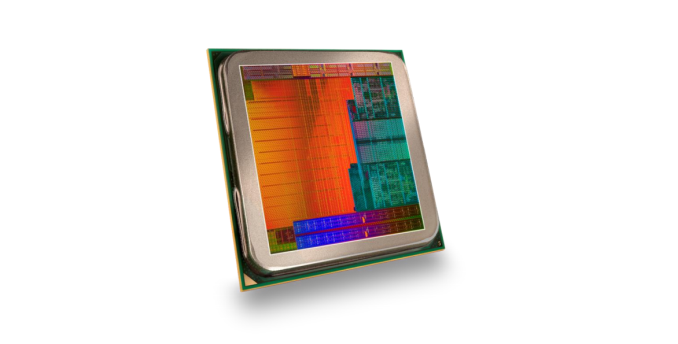


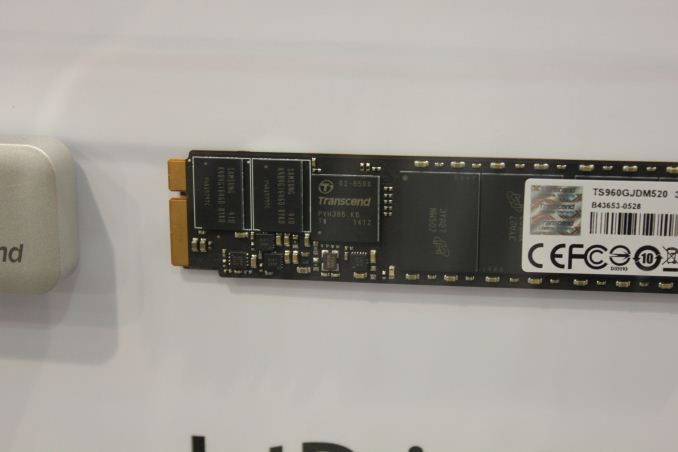

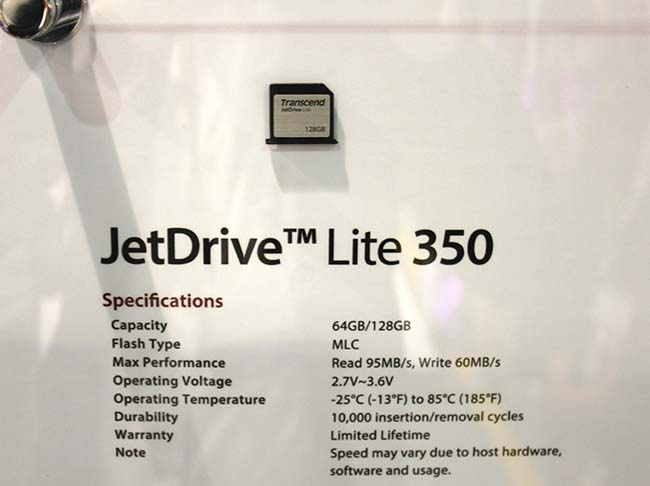
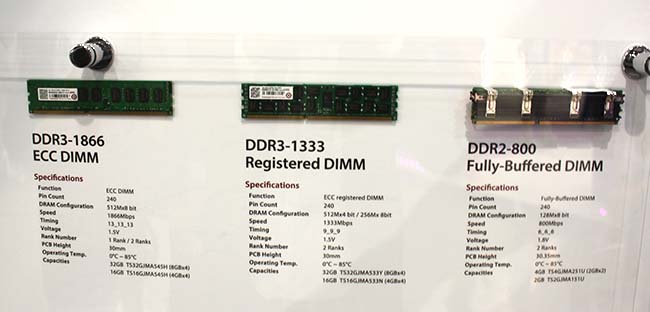
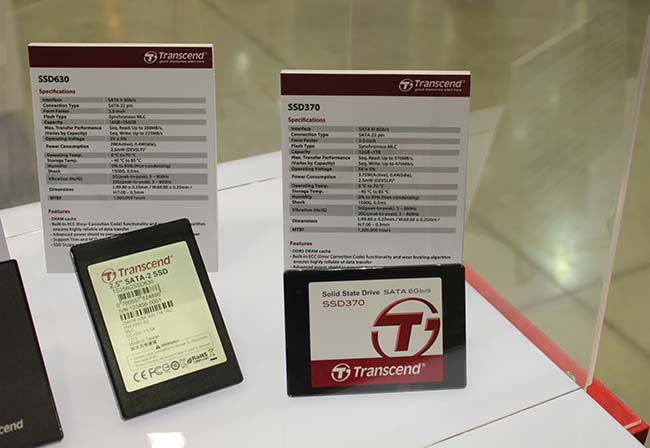
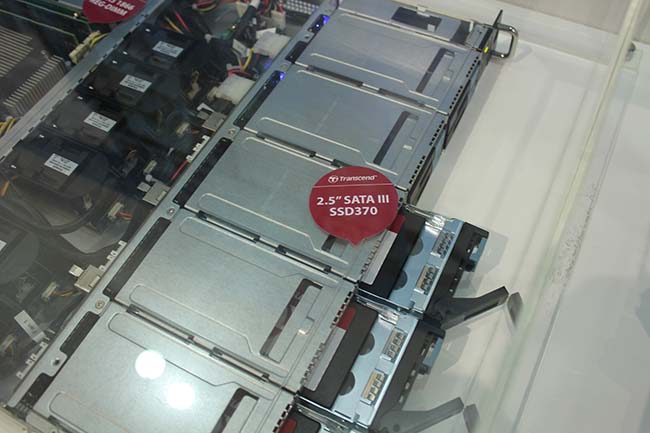

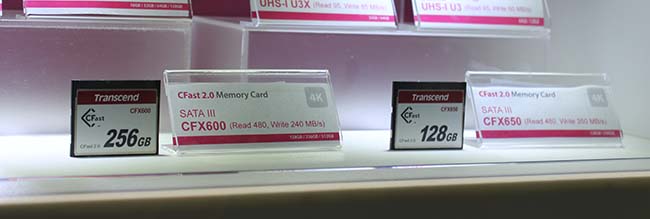
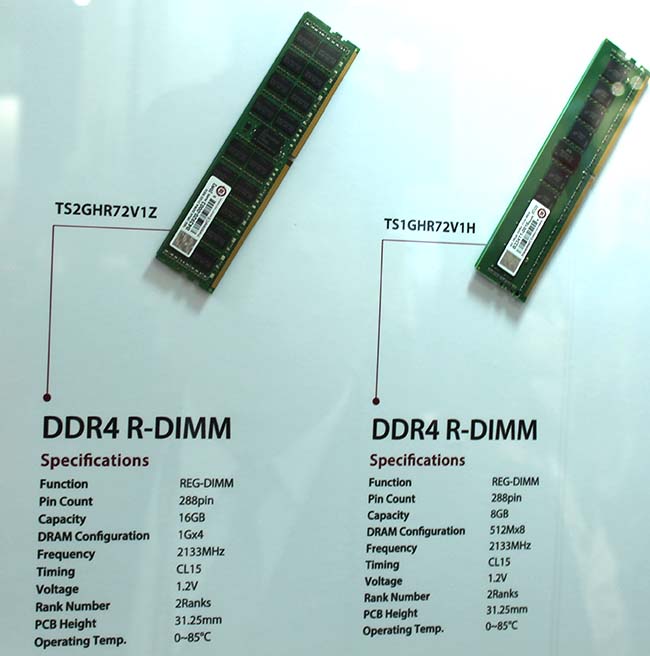
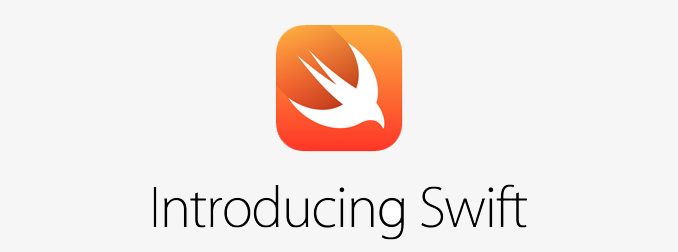

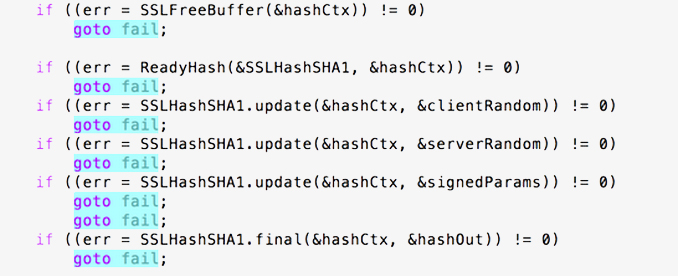
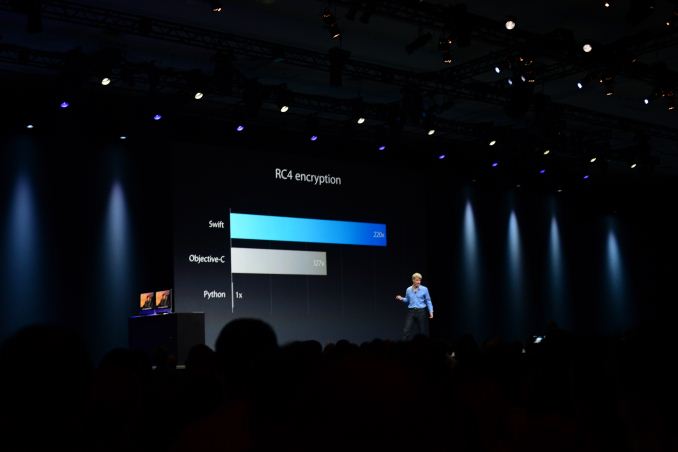
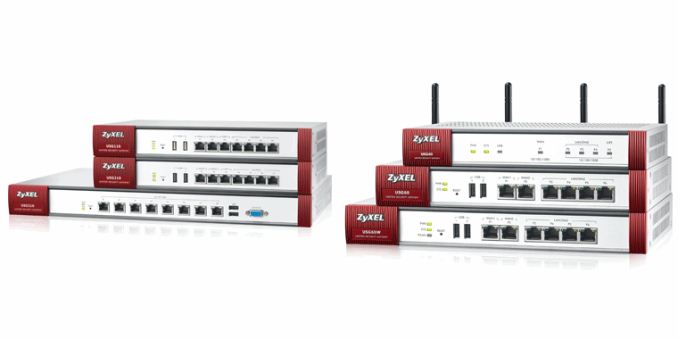
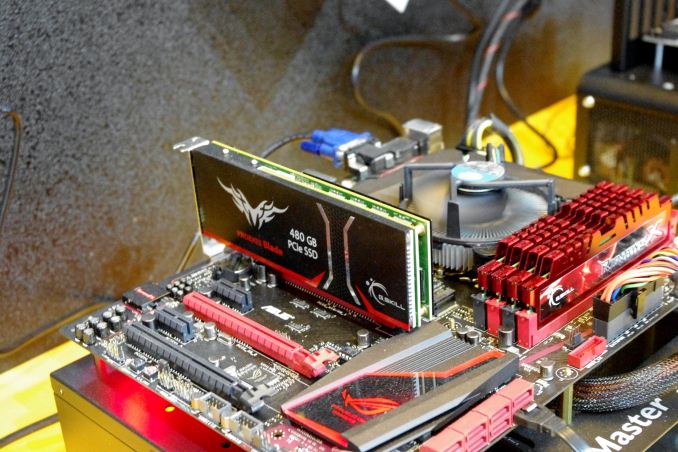





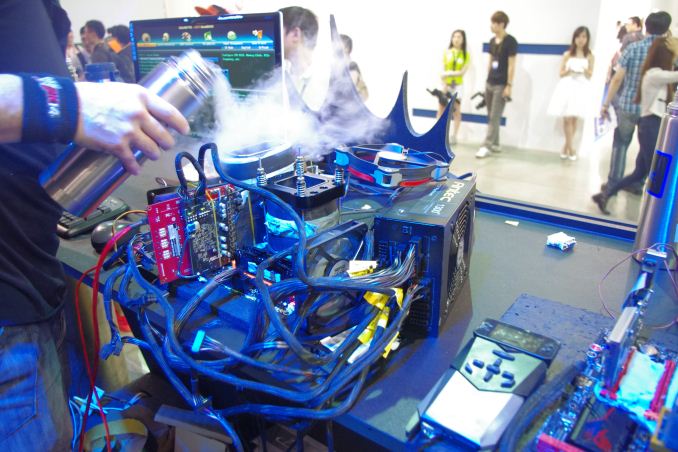
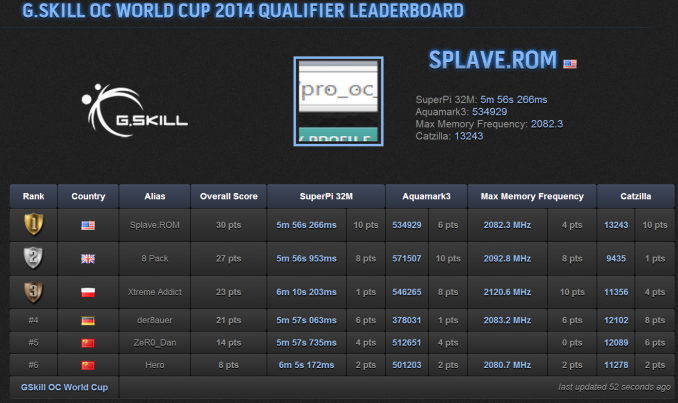
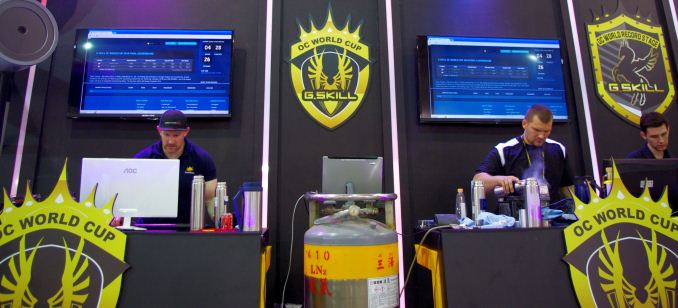
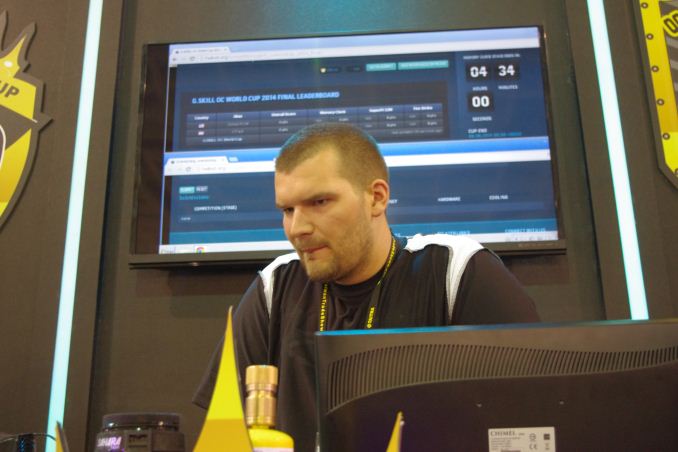



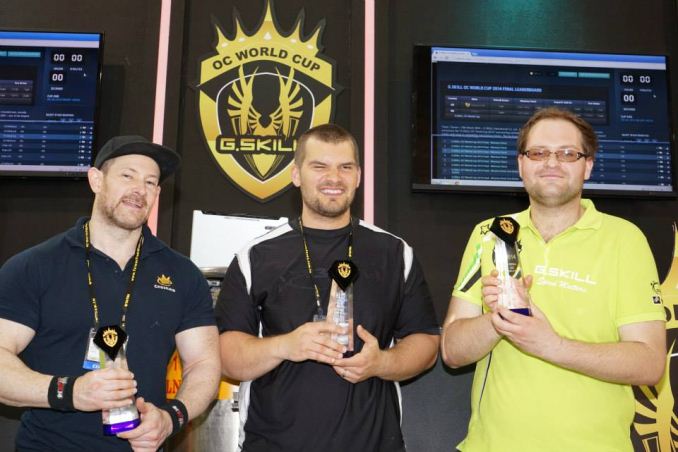
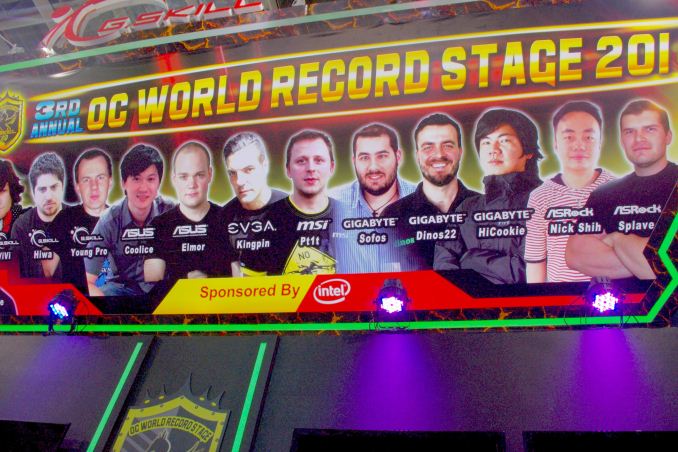
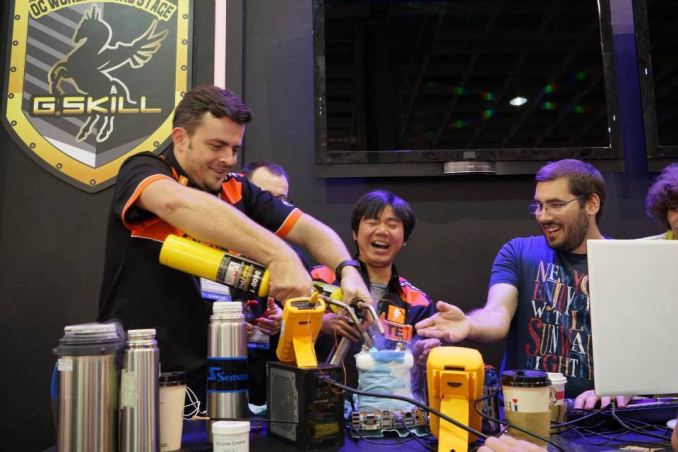



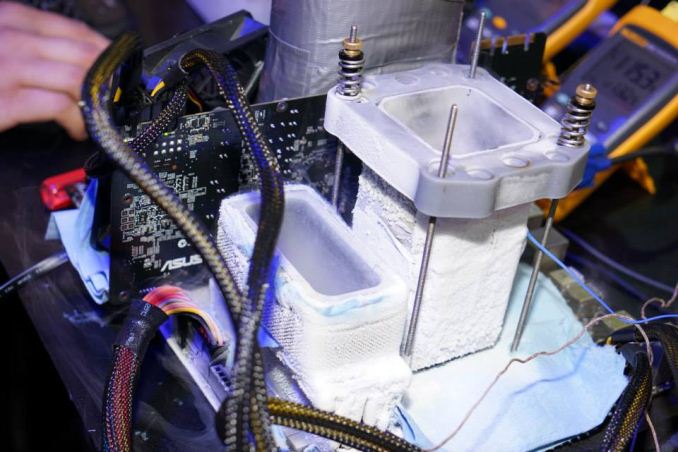

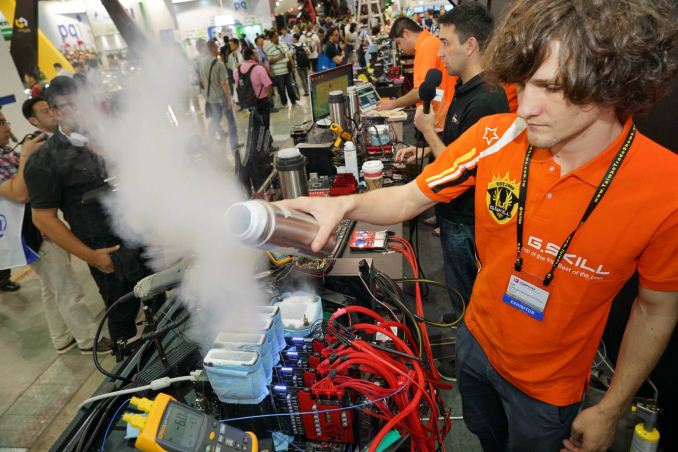
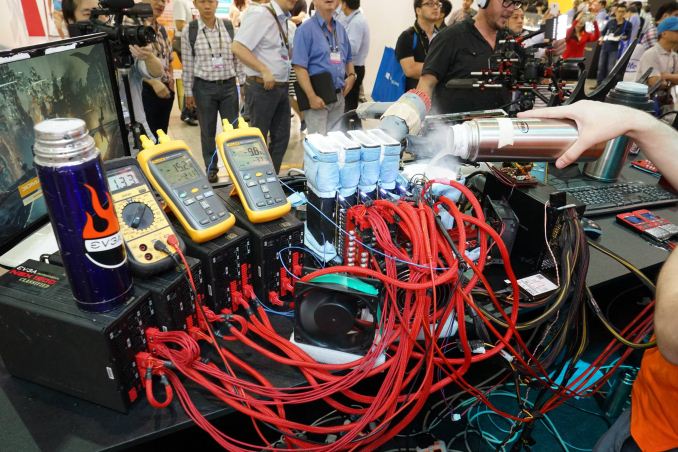

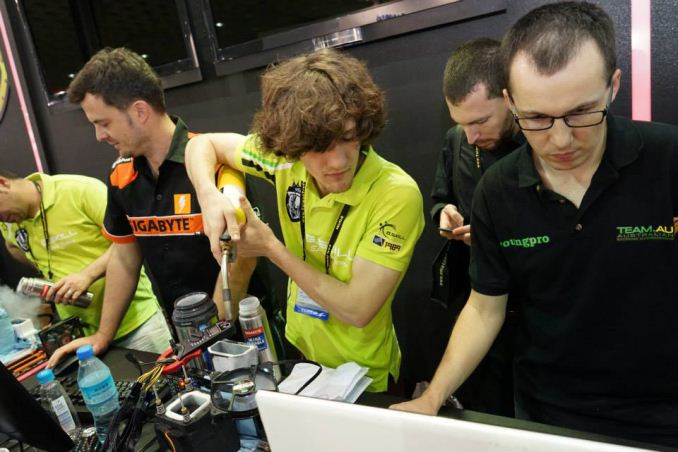


















Bookmarks